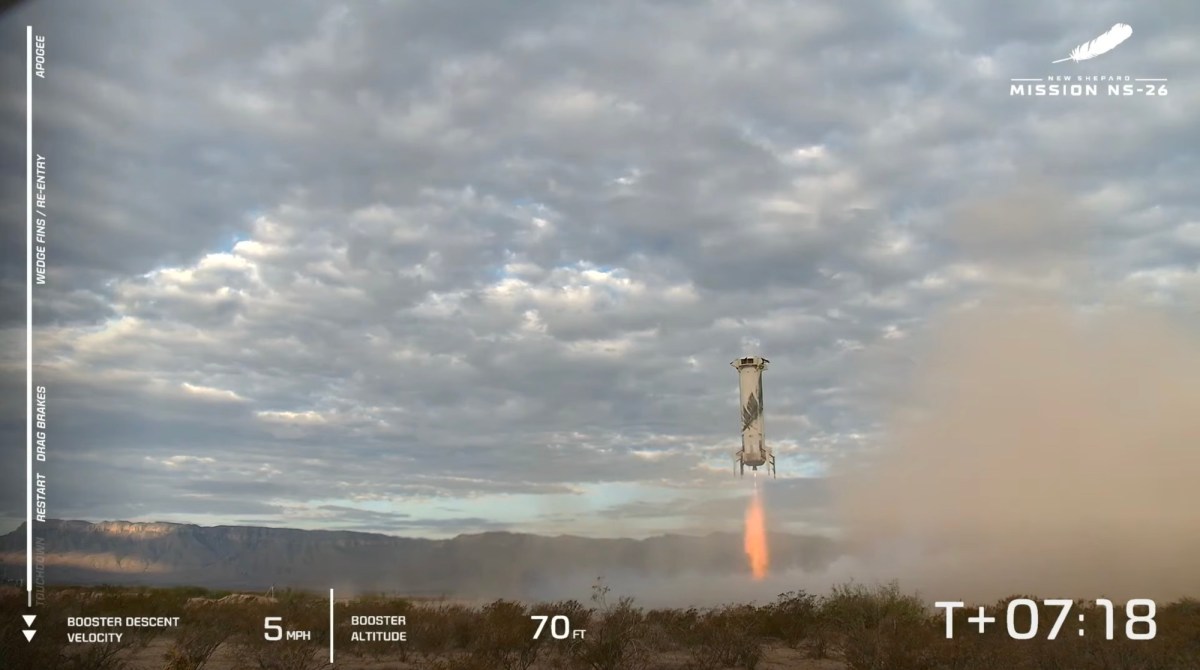WASHINGTON — Blue Origin took six people, including a NASA-funded researcher, on a New Shepard suborbital spaceflight Aug. 29.
New Shepard lifted off into cloudy skies at the company’s Launch Site One in West Texas at 9:07 a.m. Eastern. The crew capsule reached a peak altitude of 105.3 kilometers above sea level before landing 10 minutes and 8 seconds after liftoff.
The NS-26 mission carried six people, among them Rob Ferl, a University of Florida professor who conducted experiments on how gene expression in one type of plant changes when exposed to different phases of flight, including microgravity.
Ferl, a longtime advocate of using commercial suborbital vehicles for research, also sought to demonstrate the utility of such research. “There’s something to be said about first-hand experience,” he said in a pre-flight statement. “The experiment is enriched when a human mind and a human brain go with it.”
“Everything worked the way it was supposed to. The hours, weeks and months of preparation all went real well,” Ferl said on Blue Origin’s webcast of the flight after landing. “It couldn’t have been a better experience.”
“There’s room and opportunity for scientists of all sizes, shapes and ages to do this. They really should,” he added.
That research, and his flight, was funded by NASA’s Flight Opportunities program, which arranges flight of payloads on commercial suborbital and other vehicles, with support from the agency’s Biological and Physical Sciences division. Ferl was the first NASA-funded researcher to go on such a flight. Alan Stern, a planetary scientist, conducted research on a Virgin Galactic suborbital flight in November 2023, alongside private researcher Kellie Gerardi, to prepare for a future NASA-funded flight
The other five people on NS-26 were space tourists:
Nicolina Elrick, a philanthropist and entrepreneur;
Eugene Grin, who works in real estate and finance;
Eiman Jahangir, a cardiologist and Vanderbilt University associate professor whose flight was sponsored by cryptocurrency group MoonDAO;
Karsen Kitchen, a 21-year-old University of North Carolina student who became the youngest woman to cross the 100-kilometer Kármán Line, one definition of space; and
Ephraim Rabin, an American-Israeli businessman and philanthropist.The flight was the first for New Shepard since a May 19 mission designated NS-25. On that flight, one of three parachutes failed to fully open but the capsule landed safely. Blue Origin said Aug. 23 that the company “implemented corrective actions” involving the “dis-reefing system” that controls the opening of the parachutes.
On Blue Origin’s webcast of the NS-26 mission, the company showed only closeup shots of the capsule as it descended under parachutes, making it impossible to viewers to see if all three canopies fully opened. However, observers on the ground reported that the parachutes operated normally.
Blue Origin did not disclose after the flight when the next New Shepard launch was scheduled to take place.
